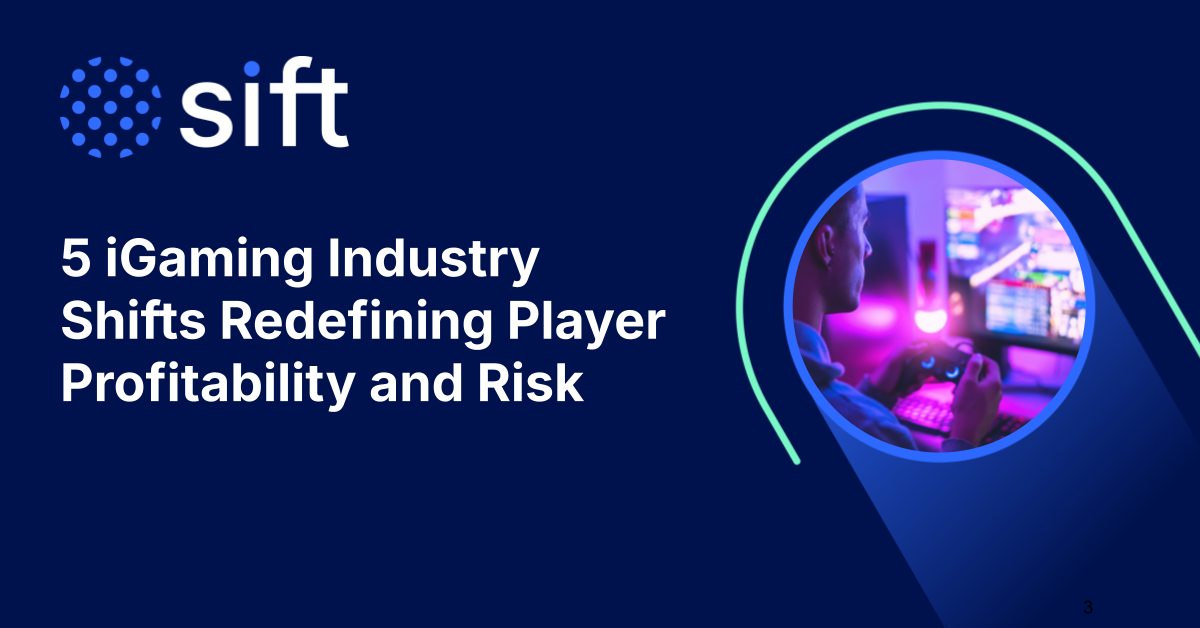Online shopping has become an integral part of people’s daily lives. According to the World Bank, two-thirds of adults worldwide use digital payments while the overall e-commerce market is expected to reach $4.32 trillion in 2025.
While businesses have much to gain through online transactions, the risk of fraud persists. Online shopping holds significant risk for fraudulent transactions, with worldwide credit card losses predicted to reach $43 billion in 2026. Businesses need proactive solutions that employ cutting-edge technologies like global intelligence networks and artificial intelligence (AI).
AI has numerous applications, and its use in fraud detection is a compelling way to combat fraud at scale while simultaneously providing a more frictionless environment for their customers. Simply put, AI fraud detection software can protect your business’s bottom line and financial information.
Key Takeaways
- AI-powered fraud detection uses machine learning and real-time monitoring to identify suspicious activity with high accuracy.
- Generative AI is a double-edged sword. Fraudsters use it to create convincing scams, while businesses use it to strengthen defenses.
- AI can detect multiple fraud types, including payment fraud, chargebacks, account takeovers, and fake account creation.
- Continuous monitoring, model updates, and a layered security approach are essential for staying ahead of evolving threats.
- Choosing scalable, compliant AI tools ensures both effective fraud prevention and a smooth customer experience.
What is AI Fraud Detection and Prevention?
AI fraud detection and AI fraud prevention refers to the use of AI and machine learning algorithms to identify and prevent fraudulent activities. It is an artificial intelligence use case that analyzes large datasets containing information about transactions to recognize patterns and identify discrepancies that can indicate if a user is likely to be attempting fraud.
An example of this is Sift’s Identity Trust XD which uses a global data network to train AI models. The global network includes statistics about customers around the world and in every industry to better understand patterns that indicate fraud. By processing this unparalleled volume of data, Sift’s fraud prevention solutions can flag individual factors of each user with extreme accuracy, providing both protection for businesses and decreased friction for normal customers, actually increasing growth. Because the database is constantly updated, new fraud patterns become apparent quickly, preventing them before they can cause severe financial or reputational damage.
The Evolution of AI in Fraud Prevention
AI’s role in fraud prevention has developed through several key phases, each marked by advances in technology and data processing capabilities.
Phase 1: Rule-Based Systems and Manual Reviews
Early fraud detection relied heavily on static, rule-based systems paired with manual reviews. Analysts created predefined rules for flagging transactions over a certain amount or from specific locations to catch suspicious activity. This approach could detect known fraud patterns, but was rigid, prone to false positives, and slow to adapt to new tactics. Fraudsters quickly learned how to bypass these systems by staying within the set limits.
Phase 2: Machine Learning and Behavioral Analysis
With the rise of machine learning, fraud prevention became more adaptive. Algorithms began analyzing historical data to identify subtle behavioral patterns and anomalies that static rules alone would miss. This allowed systems to detect suspicious activity based on deviations from a user’s normal behavior, such as unusual login times or rapid transaction frequency. Machine learning improved accuracy, reduced false positives, and gave businesses faster, more automated fraud detection capabilities.
Phase 3: Advanced AI and Real-Time Prevention
Today’s fraud prevention leverages advanced AI technologies, including deep learning and neural networks, to process massive datasets in real time. These systems integrate global intelligence networks, enabling them to identify and block emerging threats instantly. By continuously learning from new data, advanced AI models adapt to evolving fraud schemes and deliver high accuracy without introducing friction for legitimate customers. This real-time, predictive capability has become essential for protecting businesses in a fast-moving digital economy.
How Generative AI Has Changed Fraud Detection
Generative AI has both helped and hurt fraud detection. Attacks can be more convincing and scalable, while defenders now have stronger, more observant tools with which to stop fraud.
Generative AI to Enable Fraud
Fraudsters can use AI to create realistic phishing emails, fake documents, and synthetic identities. These tools allow them to run scams at scale and carry out sophisticated social engineering schemes that can bypass traditional security measures. The realism of AI-generated content makes it harder for both people and older detection systems to spot fraud.
Generative AI to Fight Fraud
On the defensive side, businesses can use generative AI to simulate attacks, which in turn can train fraud detection models and identify subtle indicators of fraud, such as forgeries or suspicious user signals. This improves accuracy, speeds up detection, and helps systems adapt quickly to new and evolving threats.
How to Use AI in Fraud Detection
In most cases, using AI fraud detection involves subscribing to a service that has access to large data sets to train AI algorithms to look for fraudsters. Sift, for example, plugs your company into their global data network so you can benefit from the prior experiences of Sift clients across the globe. At its most basic level, AI fraud detection algorithms and AI fraud prevention software analyze datasets and flag anomalies by recognizing patterns, detecting anomalies, monitoring transactions in real-time, and constantly updating.
Here’s a breakdown:
- Pattern recognition: AI algorithms group similar data points together based on inherent similarities or correlations in the data. By establishing a baseline of normal activity, these algorithms can quickly detect when something is suspicious. Different business types may have different tolerances for e-commerce fraud, such as low-cost, high volume industries like food delivery. Good fraud prevention software will allow for adjustment of normal activity baselines.
- Anomaly detection: Once a discrepancy is identified, AI fraud detection software will flag transactions or activities that deviate from established patterns of normal behavior. For instance, if an individual suddenly makes an unusually large transaction or makes multiple quick transactions from different, distant locations, AI can flag the deviation and raise alerts for further investigation.
- Real-time monitoring: Identifying anomalies in a data set is one thing, but fraud happens faster than human agents are able to react. AI fraud prevention solutions continuously analyze incoming data streams and immediately block suspected fraudulent activity as it occurs. This real-time monitoring can prevent fraudulent transactions from costing your business revenue and reputation.
- Machine learning: Machine learning models are trained by analyzing past instances of fraudulent behavior. This enables algorithms to identify underlying patterns and features indicative of fraud, facilitating the development of predictive models. The iterative nature of machine learning allows AI systems to continuously refine their fraud detection algorithms and adapt to evolving tactics used by fraudsters.
Benefits of Using AI Fraud Detection Software
- High accuracy rate: AI algorithms possess the capability to analyze vast amounts of data with remarkable precision. AI can process thousands of transactions per second, leading to reliable and consistent results. This ensures that fraudulent activities are detected accurately while allowing legitimate transactions to occur without friction.
- Real-time detection: By monitoring transactions and behaviors as they occur, AI can promptly identify suspicious patterns and take immediate action. Real-time detection not only saves businesses from potential losses but also enhances the customer experience by protecting their financial interests, ultimately improving trust and loyalty.
- Adaptability: Fraudsters are constantly evolving their tactics, but fraud detection AI systems are designed to keep pace. AI is capable of self-learning and adapting to new fraud patterns. As novel techniques emerge, AI continuously learns from new data and adjusts its algorithms accordingly, ensuring its effectiveness in detecting emerging threats.
- Customization and scalability: AI solutions can be customized to meet the specific needs of your businesses, regardless of size or budget constraints. Additionally, AI models can be tailored to focus on particular fraud indicators or risk factors relevant to a particular industry, providing a targeted approach to fraud prevention.
What Kind of Fraud Can AI Detect?
- Payment fraud involves unauthorized or fraudulent transactions made using stolen payment information, such as credit card numbers or bank account details.
- Chargebacks occur when a cardholder disputes a transaction with their bank, leading to a reversal of funds from the merchant’s account. This type of fraud was estimated to cost businesses $100 billion in 2023.
- Account takeover (ATO) is unauthorized access to a user’s account, typically gained through stolen credentials or phishing. Sift’s AI-driven solution is highly effective at blocking this type of fraud and managed a 427% jump in the rate of blocked account takeovers in 2023.
- Fake account creation (account origination) involves the creation of accounts or profiles using false or stolen identity information. Fake accounts are used to commit fraudulent activities like identity theft or promotion abuse.
- Content scams & spam are the dissemination of deceptive, unsolicited content aimed at tricking recipients into disclosing personal information or engaging in fraudulent transactions.
- Return fraud, like chargeback fraud, is a type of “friendly fraud.” It occurs when people exploit return policies by returning stolen or counterfeit merchandise for refunds. It can also happen when legitimate items are returned with altered or counterfeit receipts to obtain refunds.
Building an AI Fraud Detection Strategy
A strong AI-driven fraud detection strategy combines appropriate technology with well-coordinated processes and well-informed teams.
1. Build a Cross-Functional Fraud Management Team
Bring together experts from IT, data science, compliance, and customer experience. This ensures technical capabilities align with business priorities and regulatory requirements.
2. Monitor and Update Continuously
Fraud tactics evolve quickly. Regularly review fraud patterns, check on internal LLM models, and adjust thresholds to maintain accuracy and reduce false positives.
3. Develop a Comprehensive Fraud Detection Strategy
Use a layered defense that blends AI-powered detection with additional measures like multi-factor authentication and device fingerprinting. This strengthens protection against a range of attack types.
4. Invest in the Right Tools
Select AI fraud detection software that meets your needs for accuracy, real-time monitoring, and scalability. Ensure it integrates smoothly with your existing systems and addresses fraud risks you regularly encounter..
5. Practice Ethical Data Usage
Protect customer privacy and comply with regulations like GDPR or CCPA. Ethical data handling builds trust while keeping you legally compliant.
6. Simulate Attacks to Test Robustness
Run controlled fraud simulations to uncover system weaknesses and fine-tune detection models before attackers exploit them.
7. Build a Culture of Security
Educate employees on fraud prevention best practices and make security awareness part of daily operations. Human vigilance complements AI-based solutions for maximum protection.
AI Fraud Detection Use Cases Across Industries
Every industry is at risk of fraud, and fraudulent activities are constantly evolving into more sophisticated techniques. The good news is that AI, machine learning, and fraud detection can be applied universally across various sectors:
Digital Goods
As digital goods and services have gained popularity, so has fraud in the industry. Many businesses have limited their expansion due to fears of fraud in certain markets. However, AI-driven solutions can help protect user accounts, prevent account takeovers, and offer visibility into attack trends. With AI, businesses can make data-driven decisions about fraud prevention strategies and expand confidently.
E-Commerce and Retail
The e-commerce and retail sector is vast, with 70% of Americans shopping online. This large population is exposed to fraud daily, requiring a scalable fraud solution. AI fast-tracks trusted users while leveraging a global data network to stop emerging fraud before it impacts businesses. By drastically lowering dispute rates, safeguarding customers’ accounts, and protecting against the growing threat of first-party fraud, AI enables e-commerce and retail businesses to operate securely at scale.
Online Gambling
The iGaming market is dynamic, with rapidly changing regulations. AI can help iGaming companies maintain regulatory compliance while attracting and retaining high-value players. By providing a friction-free experience to valuable players, preventing promotional abuse and fake account creation, and avoiding regulatory penalties, AI helps protect the reputation of iGaming organizations in this highly competitive market.
Sift’s AI-powered Fraud Detection Software Helps Protect Your Business
At Sift, transparency is a core component of our fraud detection solutions. We believe it’s not enough to say that AI fraud detection “just works.” We want businesses to understand the process and see the decisions being made. While some AI models operate in a “black box” that keeps data and decision-making processes inaccessible, Sift uses Clearbox Decisioning which exposes the rules, logic, signals, and insights behind our AI models’ decision-making processes. This allows our users to interpret and understand the AI’s actions and decide for themselves what level of scrutiny they want to employ.
Transparency is crucial wherever AI and ML decision-making impacts critical business outcomes. Clearbox Decisioning builds trust and accountability into our technology, giving you the power to feel confident in the platform. You can make your own assessments of data accuracy and risk, ensuring that the AI’s decisions align with your business objectives.
Learn more about how Sift’s AI-powered fraud prevention software can empower your business to detect and prevent fraud in real time while simultaneously encouraging growth through friction-reduction measures, improved customer journeys, individualized scaling, all while protecting your bottom line. Explore Sift.
Learn How Sift Stops Fraud, Spurs Growth
Sift stops fraud, spurs growth, and has the necessary tools to get ahead of emerging fraud trends, AI-powered or otherwise.








